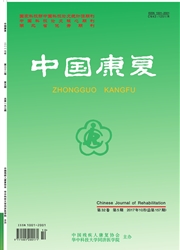

 中文摘要:
中文摘要:
目的:观察低频脉冲电刺激对老年失眠症患者睡眠结构的影响及多导睡眠图的变化特点。方法:60例老年患者随机分为电刺激组和电兴奋组各30例,分别给予低频脉冲电穴位刺激治疗和电兴奋治疗,治疗前后均行多导睡眠仪监测及临床疗效评定。结果:经过30次治疗,2组患者总睡眠时间、睡眠效率与治疗前比较均有提高;睡眠潜伏期明显缩短、觉醒次数明显减少(P〈0.05)。2组间比较,电刺激组表现更明显(P〈0.01)。临床疗效比较,电刺激组临床痊愈率及总有效率均高于电兴奋组(26.6%、79.9%与13.3%、56.6%,P〈0.05)。结论:低频脉冲电刺激治疗能调整老年失眠症患者紊乱的睡眠结构,其临床疗效优于电兴奋治疗。
 英文摘要:
英文摘要:
Objective:To observe the influence of low-frequency electric stimulation on sleep structure and changes of polysomnographic parameters in elderly patients with insomnia. Methods: Sixty patients with insomnia were randomly divided into two groups: low-frequency group (n=30) receiving low-frequency electric stimulation, and control group (n=30) receiving electroexcitation treatment. The changes of sleep structure before and after treatment were monitored by using polysomnography (PSG), and the clinical effectiveness was assessed. Results: After treatment 30 times, the total sleep time and sleep efficiency were increased obviously (t=4.12, P〈0.01), sleep onset latency was obviously shortened and sleep disruption times were obviously decreased in both two groups as compared with those before treatment. There was statistically significant difference between two groups (P〈0.01). Clinically, the curative rate and total effective rate in low-frequency electric stimulation group were significantly higher than in control group (26.6%, 79.9% vs 13.3%, 56.6%, P〈0.05). Conclusion: The low-frequency electric stimulation can remold sleep structure in elderly patients with insomnia, and its clinical effectiveness was better than electroexcitation treatment.
 同期刊论文项目
同期刊论文项目
 同项目期刊论文
同项目期刊论文
 期刊信息
期刊信息
